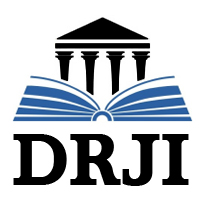Do human resources practices influence organizational commitment? Evidence for the Brazilian retail sector
DOI:
https://doi.org/10.19094/contextus.2020.43473Keywords:
organizational commitment, human resources, practices, retail sector, BrazilAbstract
This study aimed to investigate the influence of human resources practices on organizational commitment in its three dimensions. The research was carried out in a supermarket chain that operates in the Brazilian retail sector. Questionnaires were applied with the supermarket employees and the final sample is composed of 521 valid responses. Descriptive statistics, exploratory factor analysis and structural equation modeling were applied. The results evidenced that affective commitment is influenced by the work conditions, and the practice of competency-based performance appraisal influences continuance commitment, while the compensation and reward practice positively affects the normative commitment. This study contributes to the effectiveness of human resources practices and evidences the consistency of the application of the three-component model of commitment in Brazil.
Downloads
References
Abreu, M. C. S., Cunha, M. C., & Rebouças, S. M. P. (2013). Effects of personal characteristics on organizational commitment: evidence from Brazil’s oil and gas industry. The International Journal of Human Resource Management, 24(20), 3831-3852. https://doi.org/10.1080/09585192.2013.781527
Bandeira, M. L., Marques, A. L., & Veiga, R. T. (2000). As dimensões múltiplas do comprometimento organizacional: um estudo na ECT/MG. Revista de Administração Contemporânea, 4(2), 133-157. https://doi.org/10.1590/S1415-65552000000200008
Barki, E., Botelho, D. & Parente, J. (2013). Varejo: desafios e oportunidades em mercados emergentes. Revista de Administração de Empresas, 53(6), 534-538. https://doi.org/10.1590/S0034-759020130602
Bastos, A. V. B., Pinho, A. P. M., Aguiar, C. V. N., & Menezes, I. G. (2011). Comprometimento organizacional: aprimoramento e evidências de validade do modelo tridimensional de Meyer e Allen no contexto brasileiro. In J. Zanelli, N. Silva & S. R. Tolfo (Orgs.). Processos psicossociais nas organizações e no trabalho (pp. 145-160). São Paulo: Casa do Psicólogo.
Cao, J., & Hamohi, M. (2016). The impact of management development practices on organizational commitment. Human Resource Management, 55(3), 499–517. https://doi.org/10.1002/hrm.21731
Cegarra-Navarro, J. G., Jiménez-Jiménez, D., García-Pérez, A., & Del Giudice, M. (2018). Building affective commitment in a financial institution through an ambidexterity context, European Business Review, 30(1), 2-25. https://doi.org/10.1108/EBR-07-2016-0093
Collis, J., & Hussey, R. (2005). Pesquisa em administração: um guia prático para alunos de graduação e pós-graduação (2nd ed.). Porto Alegre: Bookman.
Creswell, J. W. (2014). Research design: qualitative, quantitative and mixed methods approaches (4th ed.). Thousand Oaks, CA: SAGE.
Demo, G., Fogaça, N., & Costa, A.C. (2018). Políticas e práticas de gestão de pessoas nas organizações: cenário da produção nacional de primeira linha e agenda de pesquisa. Cad. EBAPE.BR, 16(2), 250-263. https://doi.org/10.1590/1679-395159073
Demo, G., Fogaça, N., Nunes, I., Edrei, L., & Francischeto, L. (2011). Políticas de gestão de pessoas no novo milênio: cenário dos estudos publicados nos periódicos da área de administração entre 2000 e 2010. Revista de Administração Mackenzie, 12(5), 15-42. https://doi.org/10.1590/S1678-69712011000500002
Demo, G., Martins, P., & Roure, P. (2013). Políticas de gestão de pessoas, comprometimento organizacional e satisfação no trabalho na livraria cultura. Revista Alcance, 20(2), 237-254. https://doi.org/10.14210/alcance.v20n2.p237-254
Demo, G., Neiva, E. R., Nunes, I., & Rozzett, K. (2012). Human resources management policies and practices scale (HRMPPS): exploratory and confirmatory factor analysis. Brazilian Administration Review, 9(4), 395-420. https://doi.org/10.1590/S1807-76922012005000006
Fabi, B., Lacoursiere, R., & Raymond, L. (2015). Impact of high-performance work systems on job satisfaction, organizational commitment, and intention to quit in Canadian organizations. International Journal of Manpower, 36(5), 772-790. https://doi.org/10.1108/IJM-01-2014-0005
Gray, D. E. (2017). Doing research in the real world (4th ed.). Thousand Oaks, CA: SAGE.
Hair Jr., J.F., William, B., Babin, B., & Anderson, R.E. (2010). Multivariate Data Analysis (7th ed.). London: Pearson.
Hutcheson, G. D., & Sofroniou, N. (1999). The multivariate social scientist: Introductory statistics using generalized linear models. London: Sage Publications.
Jawaad, M., Amir, A., Bashir, A., & Hasan, T. (2019). Human resource practices and organizational commitment: the mediating role of job satisfaction in emerging economy. Cogent Business & Management, 6(1). https://doi.org/10.1080/23311975.2019.1608668
Jesus, R. G., & Rowe, D. E. O. (2015). Percepção de políticas de gestão de pessoas e comprometimento organizacional: o papel mediador da percepção de justiça organizacional. Tourism & Management Studies, 11(2), 211-218. https://doi.org/10.18089/tms.2015.11226
Jesus, R. G., & Rowe, D. E. O. (2017). Adaptation and obtainment of evidence for the validity of the “Scale of Perceived Sacrifices Associated with Leaving (the organization)” in the Brazilian context: a study among teachers of basic, technical, and technological education. Revista de Administração da USP, 52(1), 93-102. https://doi.org/10.1016/j.rausp.2016.10.002
Jiang, K. (2016). Strategic human resource management and organizational commmitment. In J. P. Meyer (Ed). Handbook of Employee Commitment (pp. 289-304). Massachusetts, USA.
Lee, K., Allen, N. J., Meyer, J. P., & Rhee, K-Y. (2001). The Three-Component Model of organizational commitment: an application to South Korea. Applied Psychology: An International Review, 50(4), 596-614. https://doi.org/10.1111/1464-0597.00075
Lima, C. C. A., & Rowe, D. E. O. (2014). Paradoxos na gestão de pessoas: um sobrevoo na realidade docente de uma universidade federal brasileira. In M. Jesus, C. Baptista & F. Serra. (Orgs.). Perspectivas contemporâneas em recursos humanos e empreendedorismo (pp. 130-142). Faro: UAlg ESGHT.
Lima, C. C. A., & Rowe, D. E. O. (2019). Percepção das políticas de gestão de pessoas e comprometimento organizacional em uma universidade pública. Revista Gestão Organizacional, 12(4), 118-137. https://doi.org/10.22277/rgo.v12i4.4791
Lima, C. C. A. (2014). A influência da percepção das políticas de gestão de pessoas no comprometimento organizacional: um estudo entre docentes da Universidade Federal da Bahia. Master's dissertation, Universidade Federal da Bahia, Salvador, BA, Brazil.
Marescaux, E., De Winne, S., & Sels, L. (2012). HR practices and HRM outcomes: the role of basic need satisfaction. Personnel Review, 42(1), 4-27. https://doi.org/10.1108/00483481311285200
Marôco, J. (2010). Análise de equações estruturais: fundamentos teóricos, software e aplicações. Pero Pinheiro: ReportNumber.
Medeiros, C. A. F., & Enders, W. T. (1998). Validação do modelo de conceitualização de três componentes do comprometimento organizacional (Meyer e Allen, 1991). Revista de Administração Contemporânea, 2(3), 67-87. https://doi.org/10.1590/S1415-65551998000300005
Meyer, J. P., & Allen, N. J. (1991). A three-component conceptualization of organizational commitment. Human Resource Management Review, 1(1), 61-89. https://doi.org/10.1016/1053-4822(91)90011-Z
Meyer, J. P., & Allen, N. J. (1997). Commitment in the workplace: theory, research and application. London: Sage Publications.
Meyer, J. P., Allen, N. J., & Smith, C. A. (1993). Commitment to organizations and occupations: extension and test of a three-component conceptualization. Journal of Applied Psychology, 78(4), 538-551. https://doi.org/10.1037/0021-9010.78.4.538
Meyer, J. P., & Herscovitch, L. (2001). Commitment in the workplace: toward a general model. Human Resource Management Review, 11(3), 299-326. https://doi.org/10.1016/S1053-4822(00)00053-X
Meyer, J. P., & Parfyonova, N. (2010). Normative commitment in the workplace: a theoretical analysis and re-conceptualization. Human Resource Management Review, 20, 283-294. https://doi.org/10.1016/j.hrmr.2009.09.001
Meyer, J. P. (2009). Commitment in a changing world of work. In Klein, T. E. Becker & J. P. Meyer (Eds.), Commitment in organizations: accumulated wisdom and new directions (pp. 37-68). Florence, KY: Routledge/Taylor and Francis Group.
Meyer, P. J., & Smith, A. C. (2000). HRM practices and organizational commitment: test of a mediation model. Canadian Journal of Administrative Sciences, 17(4), 319-331. https://doi.org/10.1111/j.1936-4490.2000.tb00231.x
Oliveira, H. H. & Honório, L. C. (2015). Práticas de recursos humanos e comprometimento organizacional: associando os construtos em uma empresa mineira de economia mista. Proceedings of EnANPAD, Belo Horizonte, MG, Brazil, 39.
Pandey, P., Bhattacharyya, S., & Kaur, A. (2012). Exploring the role of HR practices in supply chain. Journal of Advances in Management Research, 9(1), 113-123. https://doi.org/10.1108/09727981211225680
Parente, J. G., & Barki, E. (2014). Varejo no Brasil: gestão e estratégia (2nd ed.). São Paulo: Atlas.
Pilati, R., & Laros, J. A. (2007). Modelos de equações estruturais em psicologia: conceitos e aplicações. Psicologia: Teoria e Pesquisa, 23(2), 205-2016. https://doi.org/10.1590/S0102-37722007000200011
Pinho, A. P. M., & Bastos, A. V. B. (2014). Vínculos do trabalhador com a organização. São Paulo: Hucitec.
Pinho, L. S., Jeunon, E. E., & Duarte, L. C. (2016). Turnover in retailing: study on a supermarket network in Belo Horizonte – MG. Future Studies Research Journal: trends and strategies, 8(2), 175-195. https://doi.org/10.24023/FutureJournal/2175-5825/2016.v8i2.272
Powell, D. M. & Meyer, J. P. (2004). Side-bet theory and the three-component model of organizational commitment. Journal of Vocational Behavior, 65(1), 157-177. https://doi.org/10.1016/S0001-8791(03)00050-2
Semedo, A. S., Coelho, A., & Ribeiro, N. (2019). Authentic leadership, happiness at work and affective commitment: An empirical study in Cape Verde. European Business Review, 31(3), 337-351. https://doi.org/10.1108/EBR-01-2018-0034
Souza, M. Z. A., & Souza, V. L. (2016). Gestão de pessoas: uma vantagem competitiva? Rio de Janeiro: FGV Editora.
Tanure, B., Evans, P., & Cançado, V. L. (2010). As quatro faces de RH: analisando a performance da gestão de recursos humanos em empresas no Brasil. Revista de Administração Contemporânea, 14(4), 594-614. https://doi.org/10.1590/S1415-65552010000400003
Tanure, B., Evans, P., & Pucik, V. (2007). Virtudes e pecados capitais: a gestão de pessoas no Brasil. Rio de Janeiro, Elsevier.
Trindade, L. H., Trindade, C. G., & Nogueira, E. C. O. R. (2015) Lacunas na pesquisa em gestão de pessoas: uma proposta de agenda para pesquisas futuras. Perspectivas em Gestão & Conhecimento, 5(1), 169-183. https://periodicos.ufpb.br/ojs2/index.php/pgc/article/view/18139
Wasti, S. A., & Önder, Ç. (2009). Commitment across cultures: progress, pitfalls and propositions. In H. J. Klein, T. E. Becker & J. P. Meyer (Eds.), Commitment in organizations: accumulated wisdom and new directions (pp. 309-343). Florence, KY: Routledge//Taylor and Francis Group.
Wasti, S. A. (2003). Organizational commitment, turnover intentions and the influence of cultural values. Journal of Occupational and Organizational Psychology, 76(3), 303–321. https://doi.org/10.1348/096317903769647193
Wasti, S. A. (2016). Understanding commitment across cultures: an overview. In J. P. Meyer (Ed.). Handbook of Employee Commitment (pp. 363–75). Northampton, MA: Edward Elgar Publishing, Inc.
Wright, P. M., & Kehoe, R. R. (2009). Organizational-level and antecedents and consequences of commitment. In H. J. Klein, T. E. Becker & J. P. Meyer (Eds.), Commitment in organizations: accumulated wisdom and new directions (pp. 285-308). Florence, KY: Routledge /Taylor and Francis Group.
Published
How to Cite
Issue
Section
License
The authors, while doing the submission, accept the notice below:
We authors hold the copyright related to our paper and transfer Contextus journal the right for the first publication with a Creative Commons’ international license of the modality Attribution – Non-commercial 4.0, which in turn allows the paper to be shared providing that both the authorship and the journal’s right for initial release are acknowledged.
Furthermore, we are aware of our permission to take part in additional contracts independently for non-exclusive distribution of the version of our work published in this journal (e.g. publishing it in an institutional repository or as a book chapter), while acknowledging both the authorship and the journal’s initial publication.
We also certify that the paper is original and up to this date has not been released in any other journal, Brazilian or of another nationality, either in Portuguese or another language, as well as it has not been sent for simultaneous publication in other journals.
Last, we not only know that plagiarism is not tolerated by Contextus but also certify the paper presents the sources of passages from cited works, including those authored by ourselves.









3.png)


1.jpg)



1.jpg)


1.jpg)






.jpg)



1.jpg)

1.jpg)


1.jpg)

1.jpg)
1.jpg)
2.png)




1.jpg)
2.jpg)

1.jpg)





1.jpg)


1.jpg)
1.jpg)
